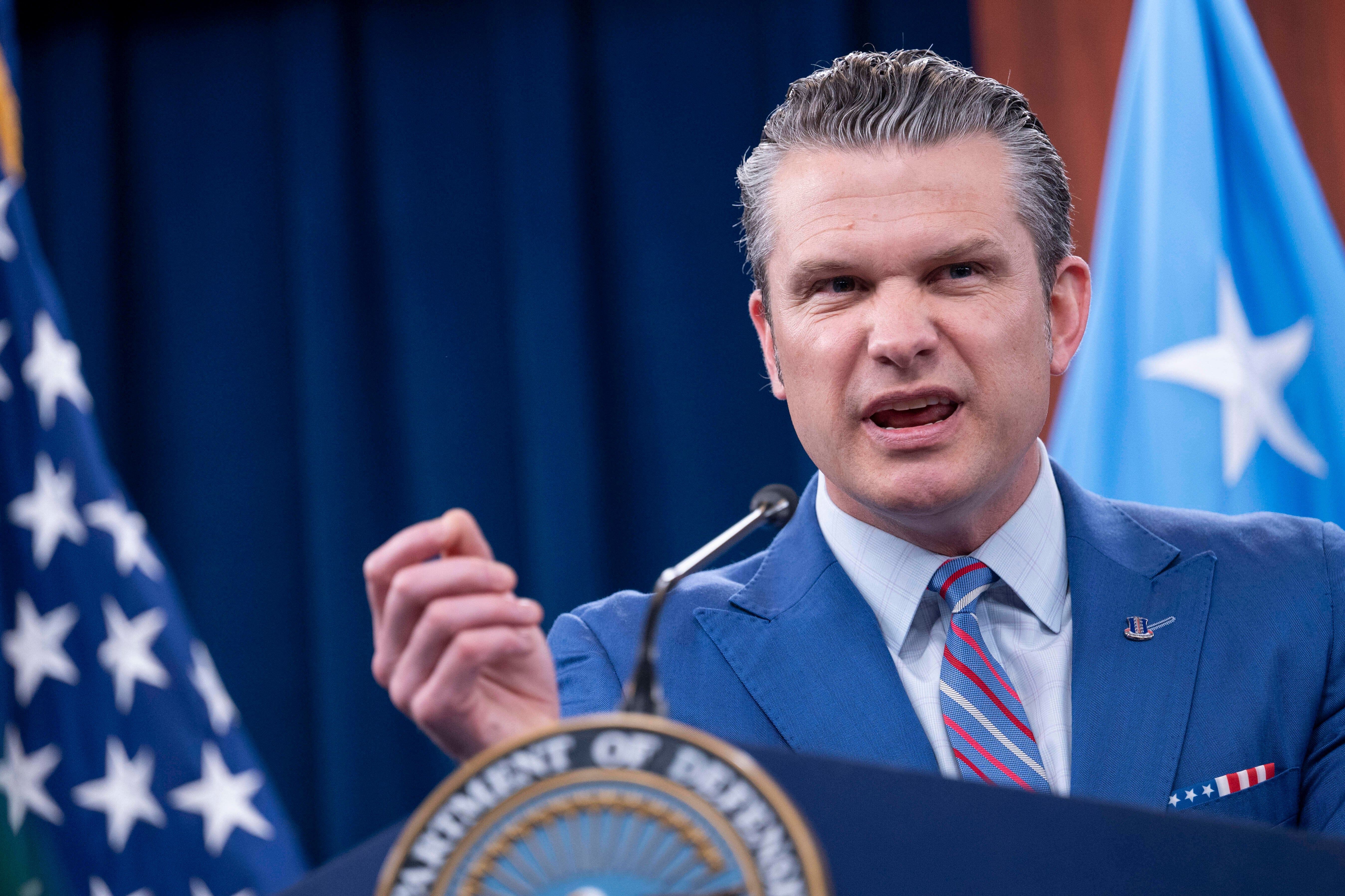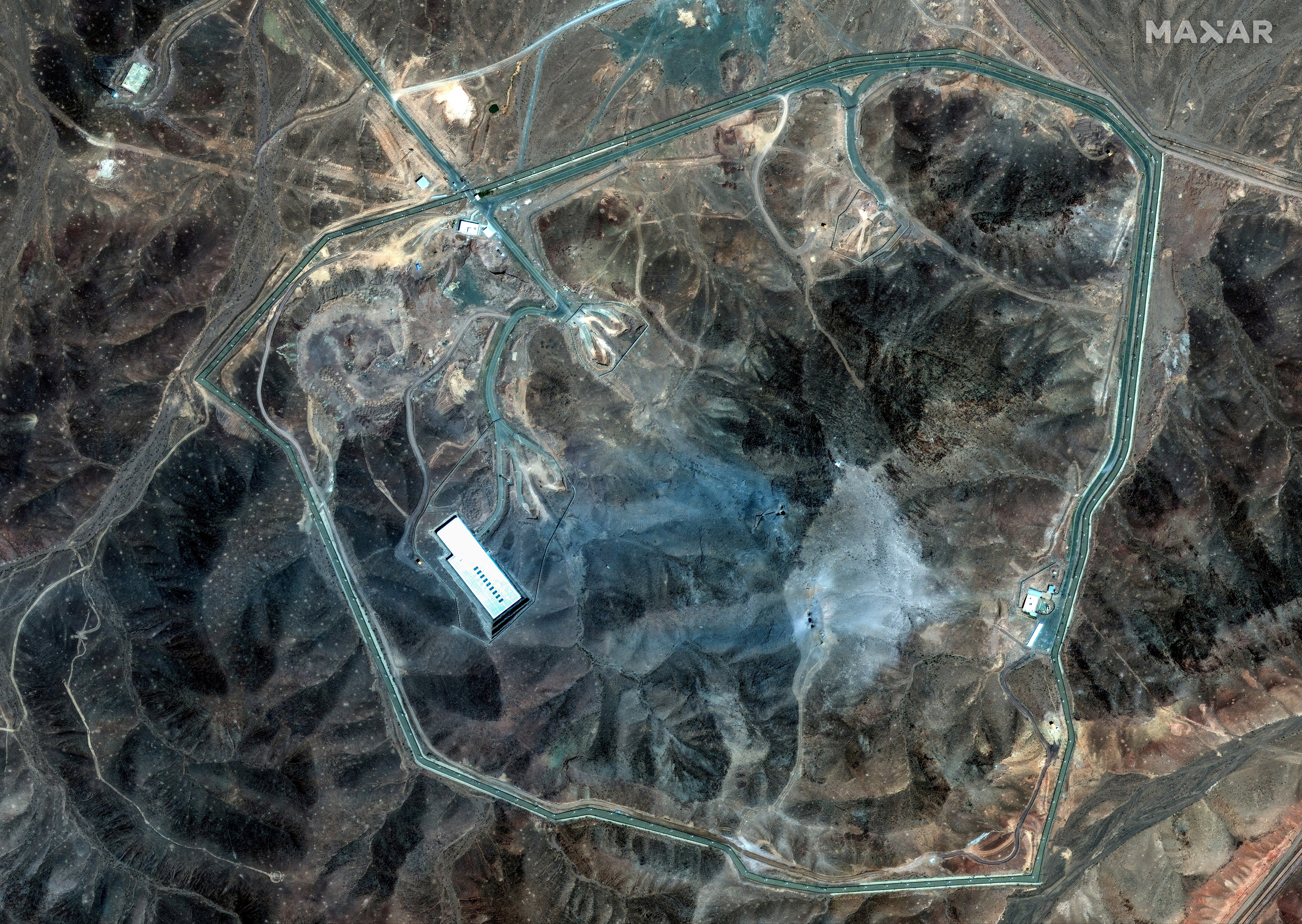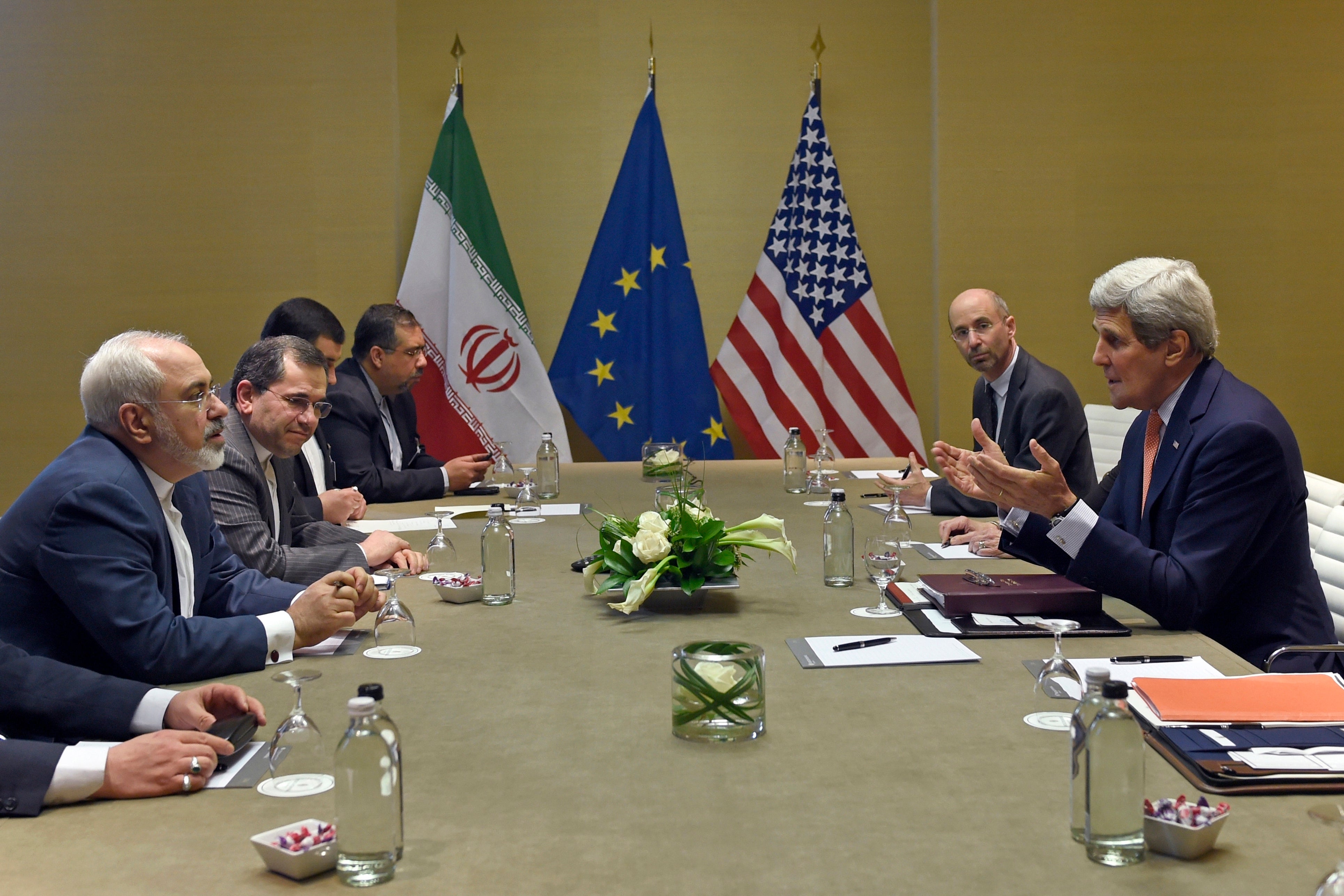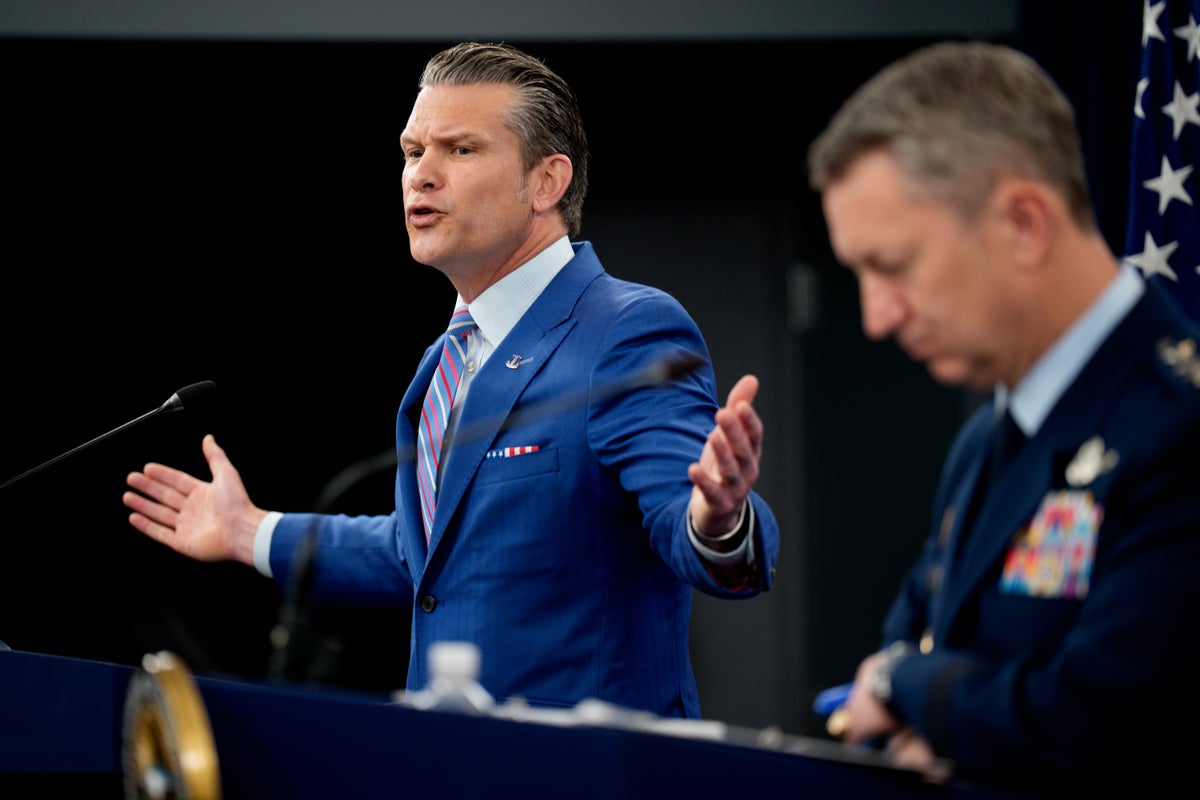Donald Trump hailed the recent U.S. strikes on Iran’s nuclear facilities as a “spectacular military success,” claiming the bombings he ordered left the sites “completely and totally obliterated.”
But almost a week on from Operation Midnight Hammer, serious doubts remain about whether the mission actually achieved its aims.
At issue is whether the attack set back Iran’s ability to build a bomb by months or years, and if the strikes may have made it more difficult to track the country’s progress towards that goal than before.
Defense Secretary Pete Hegseth held a press conference on Thursday in which he admonished the media for continuing to ask questions about the impact of the strikes on Iran’s nuclear program.
“Because of decisive military action, President Trump created the conditions to end the war, decimating – choose your word – obliterating, destroying Iran’s nuclear capabilities,” he said.

Here are the three key questions that remain unanswered about the strikes.
What happened to Iran’s highly enriched uranium?
One of the primary justifications for the U.S. to strike Iran was that it had built up a stockpile of some 400 kilograms of uranium that was enriched to a record level of 60 percent, not far from the 90 percent required to make a nuclear weapon.
Iran has long insisted its nuclear program is peaceful. But Israel and the U.S. concluded it was now close enough to a bomb to warrant immediate military action.
The facility at Fordow had centrifuges — the highly technical machines that enrich uranium — capable of enriching that uranium to the 90 percent purity level, which is why it was targeted by the 30,000 pound bunker buster bombs in the U.S. attack.
But the Trump administration doesn’t appear to be able to account for Iran’s stockpile of highly enriched uranium.
When asked by a reporter on Thursday if it was possible that Iran would have moved its stockpile from Fordow or other sites ahead of the bombing, Pete Hegseth said he was “not aware of any intelligence that I’ve reviewed that says things were not where they were supposed to be … moved or otherwise,” suggesting it would have been destroyed in the strikes.
But European intelligence agencies are telling a different story.
Preliminary assessments provided to European governments suggest that Iran moved its stockpile away from its nuclear facilities before the strikes, leaving it largely intact, according to a report in the Financial Times.
That matches what Iranian officials have claimed, and what Vice President JD Vance acknowledged in the days after the attack when he said: “We are going to work in the coming weeks to ensure that we do something with that fuel and that’s one of the things that we’re going to have conversations with the Iranians about.”

International Atomic Energy Agency (IAEA) Director General Rafael Mariano Grossi said Wednesday that his agency does “not have information of the whereabouts of this material.”
Experts have pointed out that the Trump administration has been unable to answer questions about what happened to the uranium. Nor have Trump officials discussed in detail other facilities that may have the capability to enrich that uranium further, potentially paving the way for Iran to build a bomb in secret.
“They can’t tell you what happened to the highly enriched uranium, and they have tried a million excuses. They can’t, or won’t engage with any of the questions about the facilities or what happened to the equipment,” Dr. Jeffrey Lewis, director of the East Asia Nonproliferation Program at the Middlebury Institute, told The Independent after watching Hegseth’s press conference Thursday.
Does Iran still have the ability to enrich the uranium it has?
Fordow was not the only nuclear site targeted in the U.S. strikes, even if it attracted the most attention due to the size of the bombs required to hit the underground facility.
Grossi, the IAEA director, has warned for months that the agency does not know where all of Iran’s centrifuges are. It has not had access to those aspects of the nuclear program since February of 2021.
Eric Brewer, a former U.S. intelligence official from the Nuclear Threat Initiative nonprofit, told NBC News that Iran “still has a stockpile of advanced centrifuges that have been built up over the past few years that the IAEA didn’t have access to during that time.”

Other experts believe Iran may have thousands of uranium-enriching centrifuges that were never installed in the facilities that were hit by U.S. strikes.
If some of those centrifuges are still intact, it is not inconceivable that they could be used or adapted to further enrich Iran’s stockpile of uranium to weapons-grade level.
Now, however, they will be harder to track.
Have the strikes made Iran more likely to pursue a bomb in secret?
There have only ever been two ways to prevent Iran from getting a nuclear weapon: diplomacy or military action.
Barack Obama, when he was president, was able to strike a deal with Iran and world powers in 2015 that dismantled much of its nuclear program, placed limits on how much uranium it could enrich, and opened its facilities to inspections.
That diplomatic effort led to a massive reduction in uranium enrichment and the ability to monitor Iran’s nuclear facilities.
Trump tore up that deal in 2018, insisting that he could strike a better one, which spurred Iran to kickstart its enrichment into high gear, build its stockpile to record levels, and remove monitoring equipment from nuclear facilities.
His decision to launch military strikes may damage Iran’s ability to enrich in the short term, but it will also limit the ability to monitor and track its activities.

Not only that, it has likely significantly increased the political will inside Iran to build a nuclear weapon — something U.S intelligence agencies have consistently said that Iran’s leadership had not yet chosen to do.
All of that raises the risk that hardliners in Iran will decide that building a nuclear weapon in secret is essential for the country’s defense.
“Iran has responded to attacks against this facility in the past by burying, hardening and dispersing its nuclear sites,” Kelsey Davenport, the Director for Nonproliferation Policy at the Arms Control Association, where she focuses on the nuclear and missile programs in Iran, told The Independent earlier this week.
“If Iran is focused on preserving its leverage and its option to weaponize over the long term, then it can build new, more fortified facilities, and it can disperse those facilities. And the international community is blind right now because inspectors are not in Iran’s facilities,” she said.
“So if these strikes were aimed at preventing a nuclear-armed Iran, they have failed spectacularly. They have likely driven Iran closer to a nuclear weapon, while degrading confidence and credibility in U.S. diplomacy as a viable off-ramp to resolve this crisis,” she added.
The Trump administration has offered no clear plan to track or prevent Iran from secretly building a bomb. With diplomacy now likely to be more difficult than before, the U.S. faces the prospect of further military entanglement — and a potential long-term quagmire.



